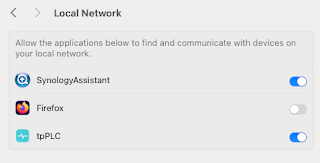Here's a bit of ( for me ) pre-reading: -
Combining IBM Integration Bus (IIB) with WebSphere Service Registry and Repository (WSRR) lets you dynamically retrieve service metadata from WSRR and use it to modify message flow behavior at runtime. This article series shows you how to integrate the two products, and provides samples that address several significant business problems. Part 7 describes the configuration and behavior of the cache used by the Endpoint Lookup and Registry Lookup nodes, including how the cache supports efficient look-up of previously retrieved WSRR artifacts, and how to make this data available to production systems.
This is part of a series: -
Combining IBM Integration Bus (IIB) with WebSphere Service Registry and Repository (WSRR) lets you dynamically retrieve service metadata from WSRR and use it to modify message flow behavior at runtime. This article series shows you how to integrate the two products, and provides samples that address several significant business problems. Part 1 describes a number of IIB/WSRR integration scenarios, shows you how to configure IIB to communicate with WSRR using a number of different nodes, and describes resources that will be used in Parts 2 through 9 to demonstrate IIB/WSRR integration capabilities.
Combining IBM Integration Bus (IIB) with WebSphere Service Registry and Repository (WSRR) lets you dynamically retrieve service metadata from WSRR and use it to modify message flow behavior at runtime. This article series shows you how to integrate the two products, and provides samples that address several significant business problems. Part 2 describes the Enpoint Lookup and Registry Lookup nodes in detail.
Combining IBM Integration Bus (IIB) with WebSphere Service Registry and Repository (WSRR) lets you dynamically retrieve service metadata from WSRR and use it to modify message flow behavior at runtime. This article series shows you how to integrate the two products, and provides samples that address several significant business problems. Part 3 shows you how to use the Endpoint Lookup node to dynamically retrieve service metadata from WSRR and use this metadata to route service requests at run time, including the ability to route around problem endpoints when an error occurs.
Combining IBM Integration Bus (IIB) with WebSphere Service Registry and Repository (WSRR) lets you dynamically retrieve service metadata from WSRR and use it to modify message flow behavior at runtime. This article series shows you how to integrate the two products, and provides samples that address several significant business problems. Part 4 shows you how to use the Registry Lookup node to dynamically retrieve XSL transforms from WSRR and apply them to messages in a flow at runtime.
Integrating IBM Integration Bus with WebSphere Service Registry and Repository: Part 5: Performing SLA checks at runtime and registry lookup scenariosCombining IBM Integration Bus (IIB) with WebSphere Service Registry and Repository (WSRR) lets you dynamically retrieve service metadata from WSRR and use it to modify message flow behavior at runtime. This article series shows you how to integrate the two products, and provides samples that address several significant business problems. Part 5 shows you how to use the Registry Lookup node to dynamically retrieve service metadata from WSRR, and use this metadata to check that a service consumer is authorized to invoke the target service.
Combining IBM Integration Bus (IIB) with WebSphere Service Registry and Repository (WSRR) lets you dynamically retrieve service metadata from WSRR and use it to modify message flow behavior at runtime. This article series shows you how to integrate the two products, and provides samples that address several significant business problems. Part 6 shows you how to use the Endpoint Lookup and Registry Lookup nodes to implement a message flow that can act as a service gateway in your SOA environment, analyzing the service request and then querying WSRR to determine how to route the request to the correct service provider.
Combining IBM Integration Bus (IIB) with WebSphere Service Registry and Repository (WSRR) lets you dynamically retrieve service metadata from WSRR and use it to modify message flow behavior at runtime. This article series shows you how to integrate the two products, and provides samples that address several significant business problems. Part 7 describes the configuration and behavior of the cache used by the Endpoint Lookup and Registry Lookup nodes, including how the cache supports efficient look-up of previously retrieved WSRR artifacts, and how to make this data available to production systems.
Combining IBM Integration Bus with WSRR lets you dynamically retrieve service metadata from WSRR and use it to modify message flow behavior at runtime. This article series shows you how to integrate the two products, and provides samples that address several significant business problems. Part 8 shows you how to use the HTTP Request node to dynamically retrieve service metadata from WSRR and use it to check that a service consumer is authorized to invoke the target service.
Combining IBM Integration Bus (IIB) with WebSphere Service Registry and Repository (WSRR) lets you dynamically retrieve service metadata from WSRR and use it to modify message flow behavior at runtime. This article series shows you how to integrate the two products, and provides samples that address several significant business problems. Part 9 shows you how to create and manage IIB Workload Management (WLM) policies in WSRR, and how to use the JMS Input node in a message flow to automatically synchronize policy changes with IIB.


No comments:
Post a Comment